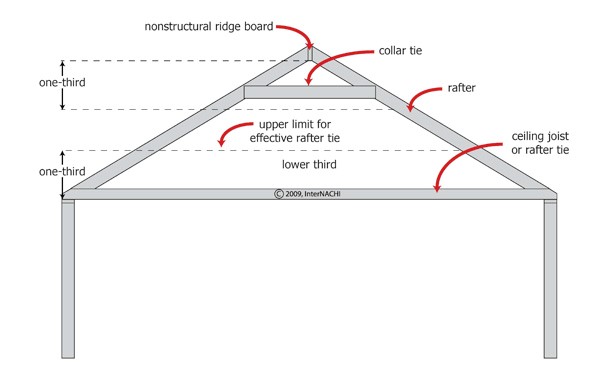Whether or not you want to be a structural engineer, you can sound more like one with these helpful tips! Below, find out the top 10 terms people misuse when it comes to elements of structural engineering.
- Concrete vs. cement: Cement is an ingredient of concrete. Cement is a powder made from limestone, sand, clay, and iron ore. Concrete is made of cement, water, sand, and stone.
- Grout vs. mortar: These products serve different purposes. Mortar is used to make one material stick to another. Grout is a filler product and intended to flow. Grout will have a higher water content. Both are used in masonry and tile work.
- Footing – not footers
- Footing is the technical term for the concrete foundation of a column or wall.
- Footer is slang that was supposed to complement “header” but in reality, it is the text at the bottom of a high school English paper.
- Collar ties vs. rafter ties vs. ceiling joists
- Collar ties are in the upper 1/3rd of the roof structure. Its purpose is to prevent the rafters from separating from ridge beam. They may not be required if the rafters have hangers connecting it to the ridge. When required, they should be installed at every other rafter.
- Rafter ties are in the lower 1/3rd of the roof structure. Its purpose it to resist the outward thrust of the rafter under load on the outward walls. Many times, the ceiling joists act as rafter ties for the roof structure. Rafter ties are always required unless the roof has a structural ridge beam, or is built with engineered trusses. (See image at left).
- Iron vs. steel: Iron is an element and steel is an alloy. Steel consists of iron and carbon. Structural elements are called “steel” elements. Aka: It is a steel angle, not an iron angle.
- Serpentine walls: A wall that follows a curved path, resembling a serpent. UVA is known for its use of serpentine walls.

- Rock vs. aggregate: Aggregate is sand, gravel, or crushed rock that has been mined for use in construction projects. It is usually separated by fine or coarse aggregate through a sieve process. Rock is what you find in nature, that has not been defined or classified.
- Soil vs. dirt: Soil is a living environment that contains microorganisms, organic matter, and insects. Dirt is not living. To make dirt into soil, add compost to it. Soil is used as fill beneath structures and has been classified with its properties determined through geotechnical exploration.
- Joists vs. rafters
- Joists: A series of wood or steel supporting part of the structure of a building, typically arrange in a parallel series to support a floor or ceiling.
- Rafters: Are joists that are sloped and are used as part of the roof structure.
- Structural engineering vs. architecture:
- Architects determine what a structure looks like.
- Structural Engineers make the structure safe and stable so it can stand the test of time and nature.

